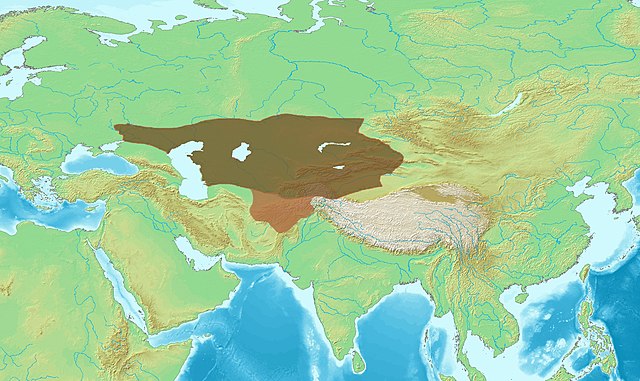Nushibi was the collective name for five tribes of the right (western) wing in the Western Turkic Khaganate, and members of "ten arrows" confederation found in the Chinese literature. The references to Nushibi appeared in Chinese sources in 651 and disappeared after 766. The Nushibi tribes occupied the lands of the Western Turkic Khaganate west of the Ili River of contemporary Kazakhstan.
Greatest extent of the Western Turkic Khaganate after the Battle of Bukhara
Image: Turkish officers during a audience with king Varkhuman of Samarkand. 648 651 CE, Afrasiyab, Samarkand
Image: Afrasiab. Western Turk officer, 7th century CE
Image: Afrasiab. Seated Turkish attendants. 7th century CE
The Western Turkic Khaganate or Onoq Khaganate was a Turkic khaganate in Eurasia, formed as a result of the wars in the beginning of the 7th century after the split of the First Turkic Khaganate, into a western and an eastern Khaganate.
Western Turk officers, one of them labeled as coming from Argi (Karashahr in modern Xinjiang), attending the reception of ambassadors by king Varkhuman of Samarkand. Afrasiab murals, 7th century CE. The Turks had a Mongoloid appearance.
An early Turk Shahi ruler named Sri Ranasrikari "The Lord who brings excellence through war" (Brahmi script). In this realistic portrait, he wears the Turkic double-lapel caftan. Late 7th to early 8th century CE.
Front, with double-parked tunic
Back, with long braids







